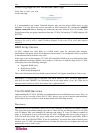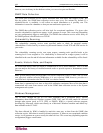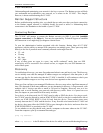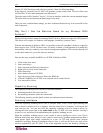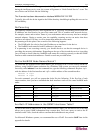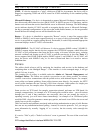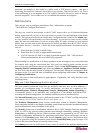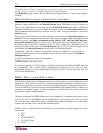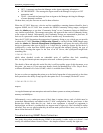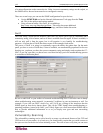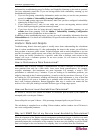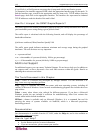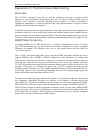
114 COMMANDCENTER NOC ADMINISTRATOR GUIDE
The Management group receives notifications for any default notifications sent to the
Network/Systems, Windows Management, or Security groups. Any notification sent to these
groups is given, by default, a 15 minute window for acknowledgement.
The Reporting group receives the Availability and Outage reports via email every Monday
morning.
What Conditions Cause a Notification to be Sent?
Notifications are sent when the CC-NOC notes that a service has experienced an outage. This will
generate a pager notification to the Network/Systems group. When that service is restored, an
email is sent confirming the service restored to the Network/Systems group. When a coldStart or
warmStart SNMP trap is received, an Email notification is sent to the Network/Systems group.
When an authenticationFailed trap is received at the CC-NOC, an Email notification is sent to the
Security group.
When a new node is discovered, an email notification will be sent to the Network/Systems group.
Note: Because many nodes are discovered in a relatively short period of time following the initial
discovery process, we highly recommend leaving Notices “Off” until the initial discovery
process has completed. Likewise, when a service has been down for an extended period (7 days,
by default), that service will be deleted from the CC-NOC's polling lists. When this occurs, an
email notification will be sent to the Network/Systems group. Also, if critical Node information
has changed, the Network/Systems group will receive an Email notification.
Additionally, when the Windows management sub-system identifies a system fault or
software installation/removal on a managed desktop, an email will be sent to the Windows
Management group.
CC-NOC notifications are fully user-configurable.
SNMP Data Collection
A key feature that the CC-NOC provides is its ability to not only collect data via SNMP, but to do
so automatically with sensible default configurations in place that will work for most
deployments. However, to truly understand the benefit of all this, we first must step back and
review some SNMP basics.
SNMP – What it is and What it Does
SNMP, or the Simple Network Management Protocol, was created to provide a rudimentary set of
standards to allow hardware vendors to provide management information to external sources.
What has evolved since then is one of the most convoluted schemes for sharing information ever
contrived. SNMP has grown like a house that has had addition after addition built on, without ever
consulting an architect. Despite its relative kludginess, it works and works fairly consistently
despite some vendors’ implementations.
The basic architecture of SNMP includes two basic components: A manager and an agent. In our
case, the CC-NOC is the manager and the managed device, for example, router, server, switch,
etc., hosts the agent. The agent is merely a standardized interface that allows us to send specific
requests and in return, receive specifically formatted replies.
SNMP version 1, which is the most commonly seen version deployed today, supports five basic
transactions:
• GET
• SET
• GET RESPONSE
• GET NEXT, and
• TRAP



